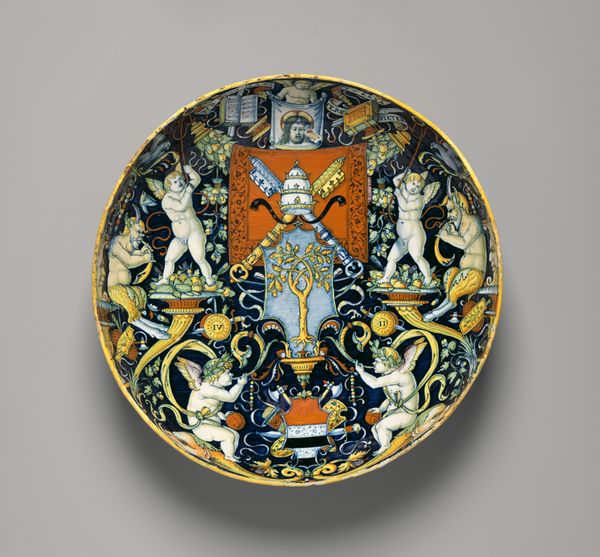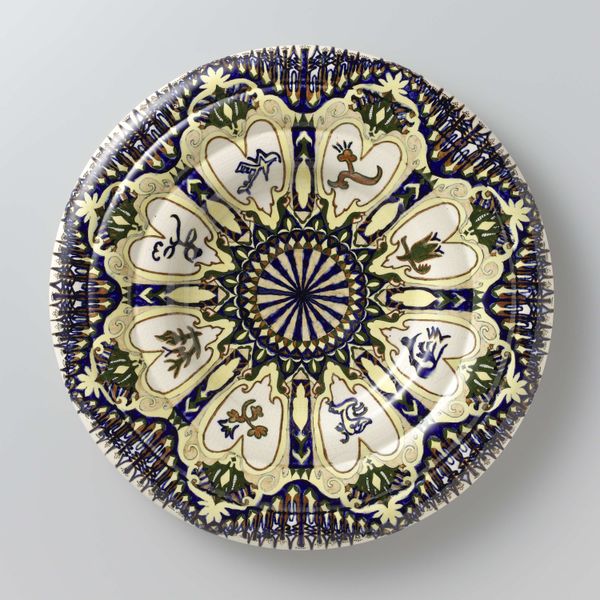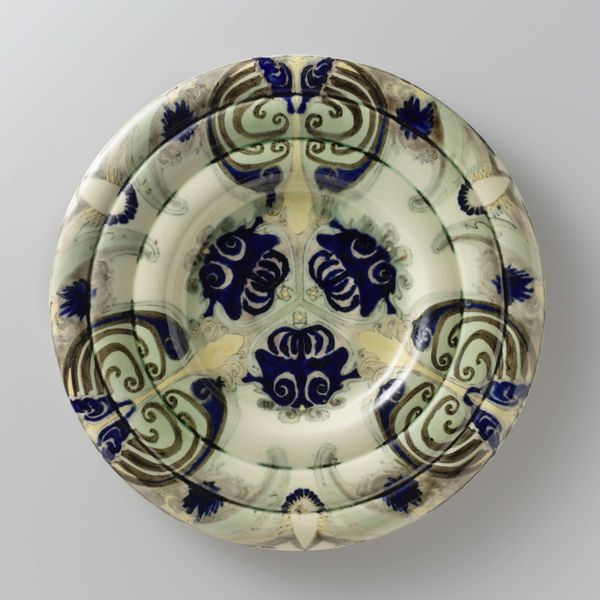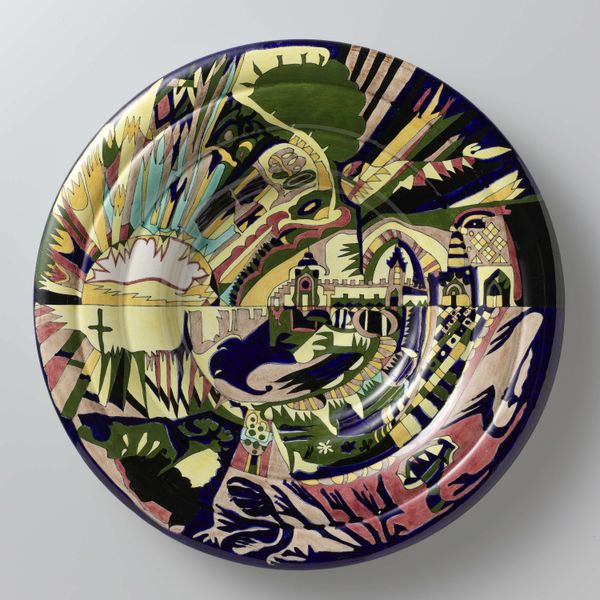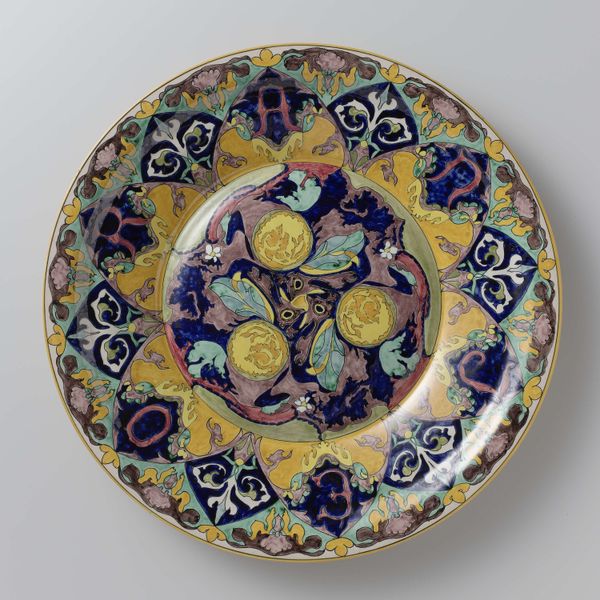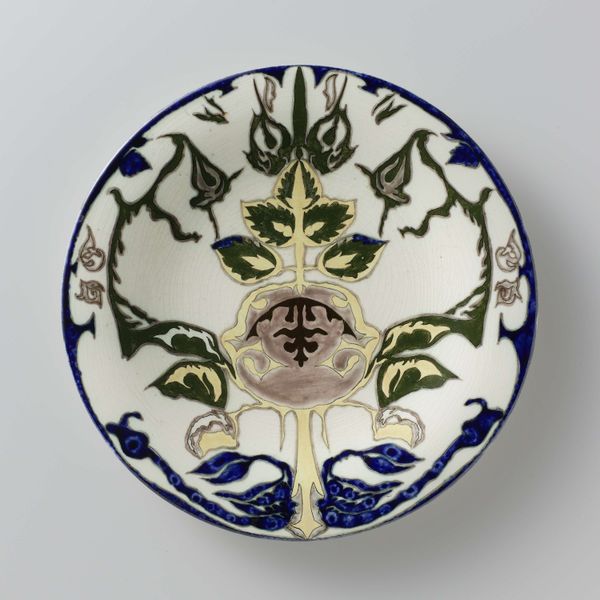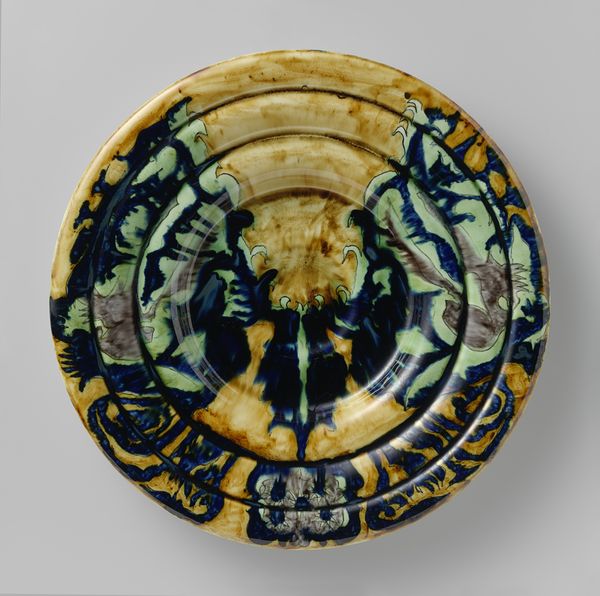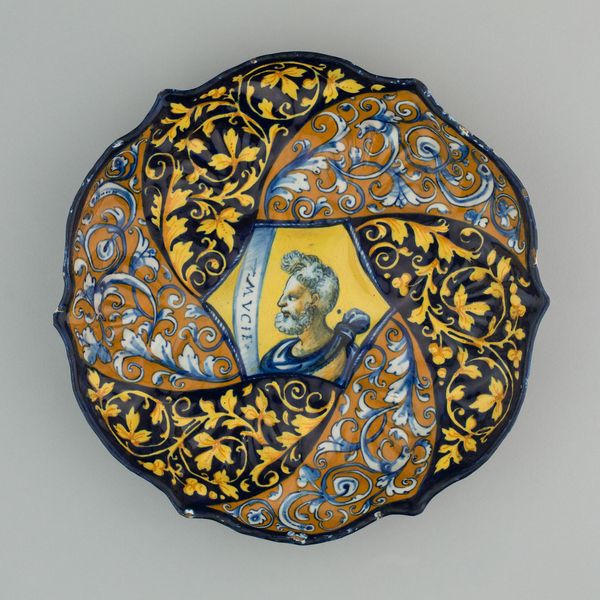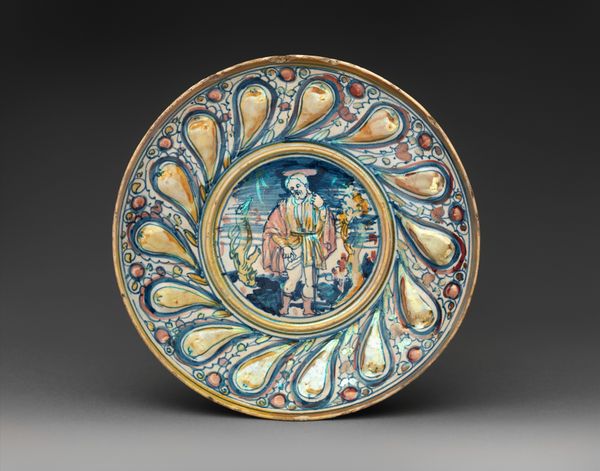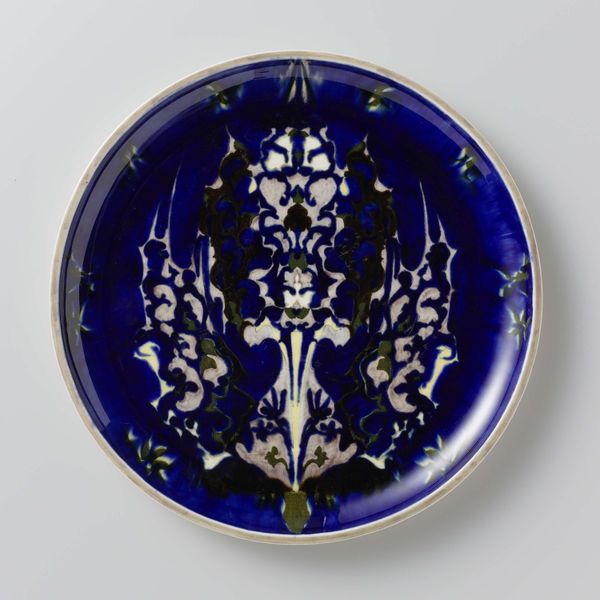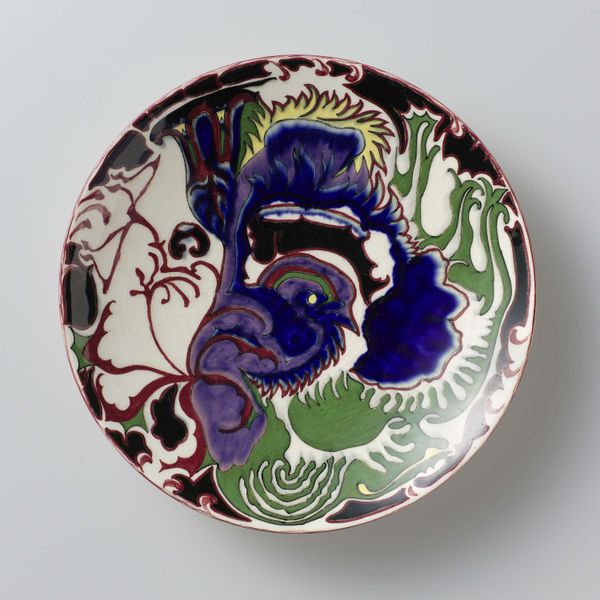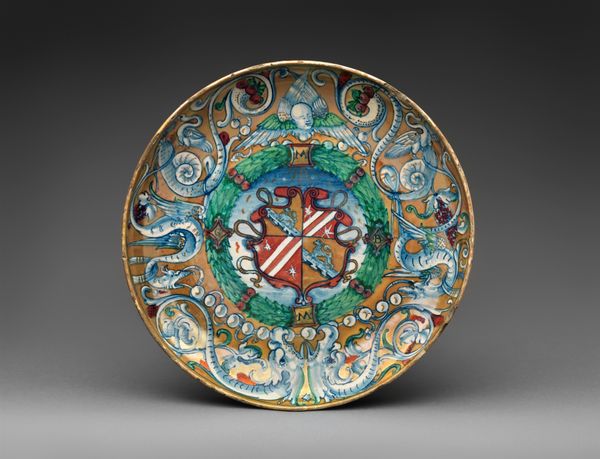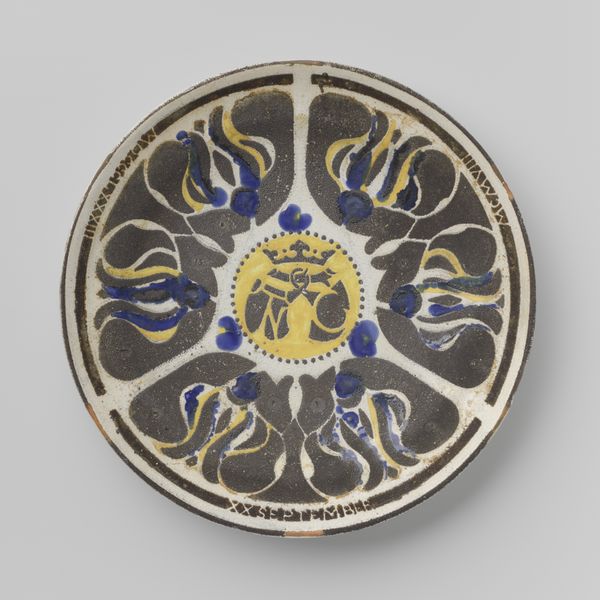
ceramic, earthenware
#
art-nouveau
#
ceramic
#
earthenware
#
stoneware
#
ceramic
#
decorative-art
Dimensions: height 4.2 cm, diameter 38.5 cm
Copyright: Rijks Museum: Open Domain
Curator: Here we have an earthenware decorative plate titled ‘Day,’ crafted by Theo Colenbrander in 1888. Its design is certainly eye-catching. Editor: Yes, arresting even. There's something about that symmetrical structure and cobalt blue backdrop that projects authority, like an emblem or heraldic shield. Curator: Note the radially organized composition and rhythmic interplay of the design motifs. Colenbrander seems preoccupied with symmetry here, which structures the entire visual field of the plate. The repetition creates visual balance and harmony, doesn't it? Editor: Indeed, and considering the title, the symmetry could represent the predictable rise and set of the sun. The symbolic rays emanating from the top suggest radiant energy. The entire pattern appears somewhat stylized like something derived from ancient Near Eastern art. Do you agree? Curator: Absolutely. One could consider the formal properties that elevate what might have simply been a functional item to something visually compelling. Colenbrander demonstrates that decorative art is also organized in systems. Editor: True, it begs the question, doesn't it? What did "Day" signify in 1888? There's such density here—birds, trees, buildings perhaps—all compressed within a daily cycle. The dark blue surrounding these motifs, in many cultures, serves to symbolize heaven and spiritual contemplation. Curator: These visual signs interact, not unlike signifiers in language. We decode them through the lenses of art nouveau and decorative arts. Editor: Well, I read here that Colenbrander was key in establishing that idiom in Dutch ceramics. Knowing that gives these forms even greater weight. It represents a real shift away from more organic or classical decorative structures toward patternization and formalization. Curator: This shift represents a fascination with order. To see how this piece is self-contained and reflects deliberate geometry, it becomes apparent how "Day" transcends the purely representational. Editor: Yes, you are right. Seeing it this way is quite illuminating. It truly functions as more than merely a visual record, and rather suggests our relationship to time itself. Curator: Ultimately, we can see it reveals more than what first appears. Editor: And through the object, an intriguing moment in culture becomes a touch more vivid for us.
Comments
No comments
Be the first to comment and join the conversation on the ultimate creative platform.

